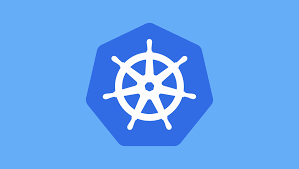Kubernetes - Role Based Access Control (RBAC)
Explore the Kubernetes RBAC mechanism to improve the security posture of a K8 cluster.
Kubernetes - Role Based Access Control (RBAC)
Introduction
- Kubernetes RBAC (Role-Based Access Control) is a crucial security mechanism that governs how users, applications, and services interact with cluster resources. By defining permissions through roles and bindings, Kubernetes ensures that only authorized entities can perform specific actions.
What is RBAC?
- RBAC is a security framework in Kubernetes that restricts access to cluster resources based on defined roles and permissions.
- It allows administrators to implement the principle of least privilege, ensuring that users and services have only the necessary permissions to perform their tasks.
Key RBAC components
- Role
- A Role defines a set of permissions within a specific namespace. It specifies which resources can be accessed and what actions can be performed.
- Example:
1 2 3 4 5 6 7 8 9
apiVersion: rbac.authorization.k8s.io/v1 kind: Role metadata: namespace: dev name: pod-reader rules: - apiGroups: [""] resources: ["pods"] verbs: ["get", "list"]
- ClusterRole
- A ClusterRole is similar to a Role but applies across the entire cluster, not just a single namespace.
- Example:
1 2 3 4 5 6 7 8
apiVersion: rbac.authorization.k8s.io/v1 kind: ClusterRole metadata: name: cluster-admin rules: - apiGroups: [""] resources: ["*"] verbs: ["*"]
- RoleBinding
- A RoleBinding assigns a Role to a user, group, or service account within a specific namespace.
- Example:
1 2 3 4 5 6 7 8 9 10 11 12 13
apiVersion: rbac.authorization.k8s.io/v1 kind: RoleBinding metadata: name: pod-reader-binding namespace: dev subjects: - kind: User name: johndoe apiGroup: rbac.authorization.k8s.io roleRef: kind: Role name: pod-reader apiGroup: rbac.authorization.k8s.io
- ClusterRoleBinding
- A ClusterRoleBinding grants cluster-wide permissions by binding a ClusterRole to a user, group, or service account.
- Example:
1 2 3 4 5 6 7 8 9 10 11 12
apiVersion: rbac.authorization.k8s.io/v1 kind: ClusterRoleBinding metadata: name: cluster-admin-binding subjects: - kind: User name: admin apiGroup: rbac.authorization.k8s.io roleRef: kind: ClusterRole name: cluster-admin apiGroup: rbac.authorization.k8s.io
Managing RBAC in Kubernetes
- Checking Roles and Bindings
- To list Roles and RoleBindings in a namespace:
1
kubectl get roles -n dev1
kubectl get rolebindings -n dev- To check ClusterRoles and ClusterRoleBindings:
1
kubectl get clusterroles
1
kubectl get clusterrolebindings
- Verifying Access
- To verify a user’s permissions:
1
kubectl auth can-i get pods --as=johndoe -n dev
- Removing RBAC Permissions
- To delete a RoleBinding:
1
kubectl delete rolebinding pod-reader-binding -n dev- To delete a ClusterRoleBinding:
1
kubectl delete clusterrolebinding cluster-admin-binding
Best Practices for Kubernetes RBAC
Follow the Principle of Least Privilege– Grant only the necessary permissions.Use Service Accounts for Automation– Assign roles to service accounts instead of users where possible.Separate Roles for Users and Applications– Avoid using the same roles for human users and workloads.Regularly Audit and Review Permissions– Run kubectl auth can-i and check RBAC policies.Leverage Namespace Isolation– Use namespace-specific roles to limit access to resources.Monitor and Log Access– Enable audit logging in Kubernetes for tracking access requests.
Manual User Creation and Certificate Signing
- To manually create a user and grant access, follow these steps:
Generate Private Key and Certificate Signing Request (CSR)1
openssl genrsa -out user.key 20481
openssl req -new -key user.key -out user.csr -subj "/CN=user1/O=dev-team"
Create a Kubernetes CSR Object1 2 3 4 5 6 7 8 9 10 11
apiVersion: certificates.k8s.io/v1 kind: CertificateSigningRequest metadata: name: user1-csr spec: groups: - system:authenticated request: $(cat user.csr | base64 | tr -d '\n') signerName: kubernetes.io/kube-apiserver-client usages: - client auth
- Apply the CSR:
1
kubectl apply -f user-csr.yamlApprove and Retrieve the Signed Certificate1
kubectl certificate approve user1-csr
1
kubectl get csr user1-csr -o jsonpath='{.status.certificate}' | base64 --decode > user.crt
Configure kubeconfig for the New User1
kubectl config set-credentials user1 --client-certificate=user.crt --client-key=user.key --embed-certs=true
1
kubectl config set-context user1-context --cluster=my-cluster --user=user1
Automating User and Group Management in Kubernetes
- Instead of manually creating users, organizations can automate user and group provisioning using external identity providers like LDAP, Dex, or OIDC.
- Assign users to groups in an identity provider and map those groups to RBAC roles in Kubernetes.
- Use ClusterRoleBinding to assign permissions at the cluster level.
This post is licensed under CC BY 4.0 by the author.
